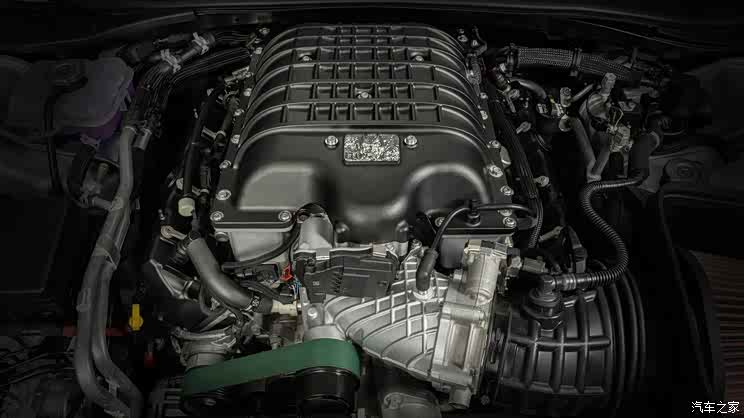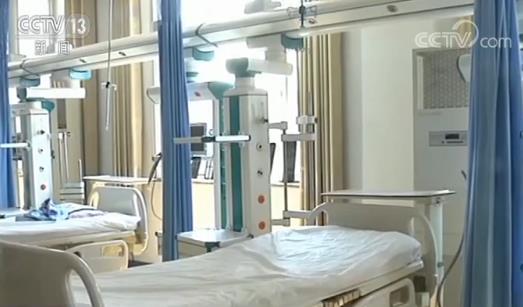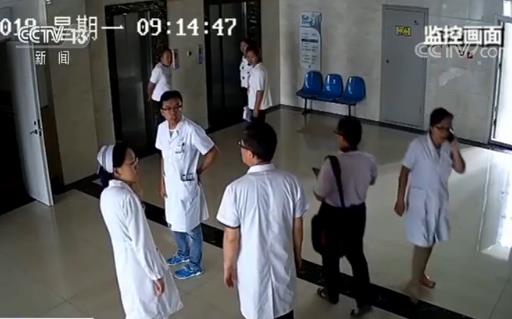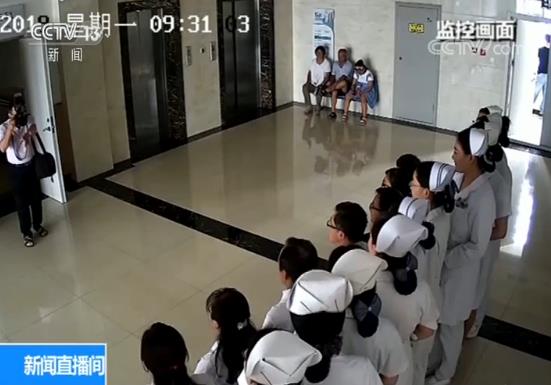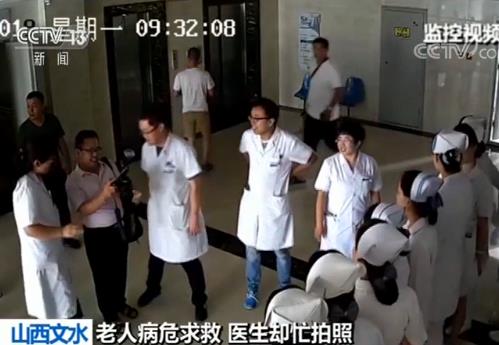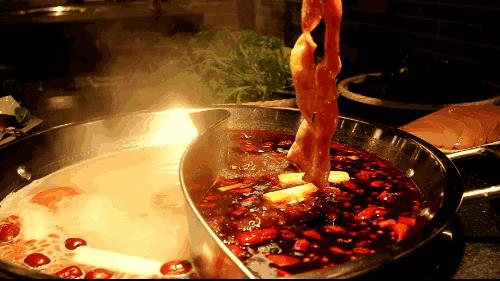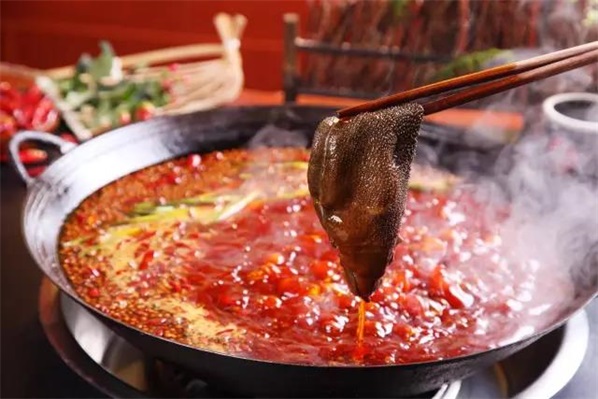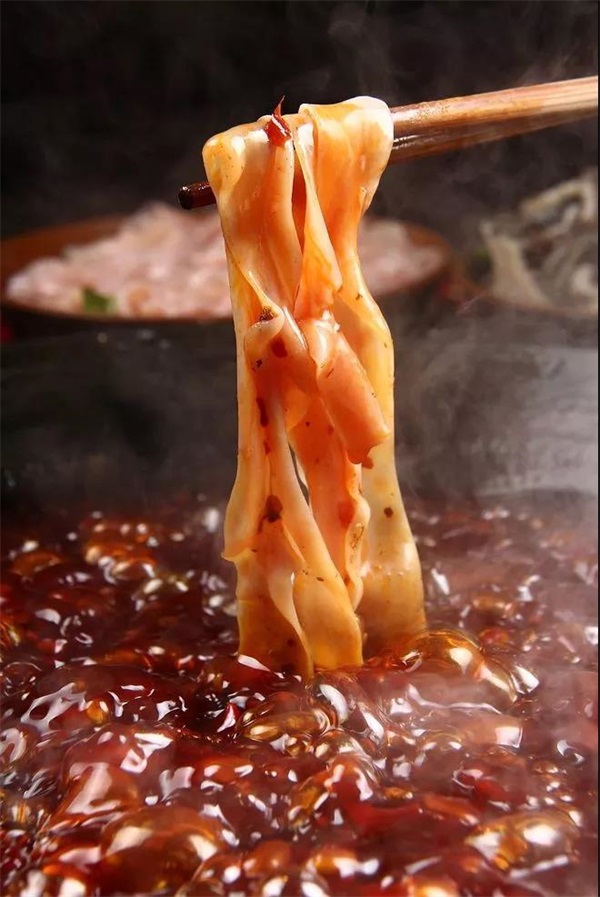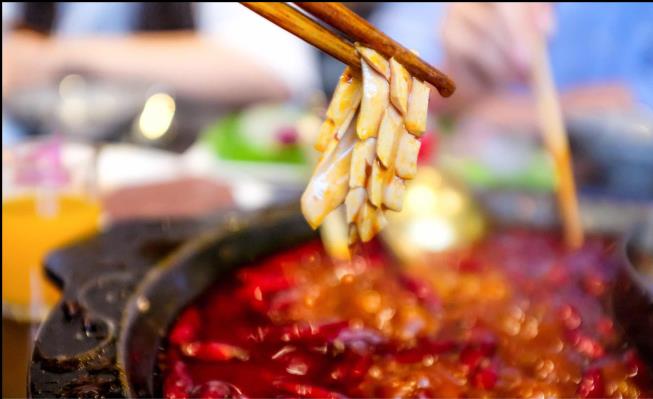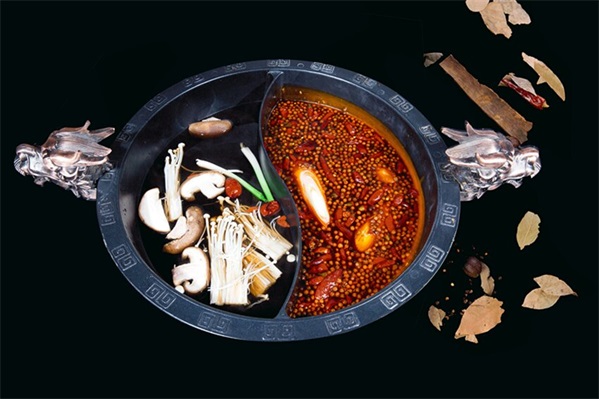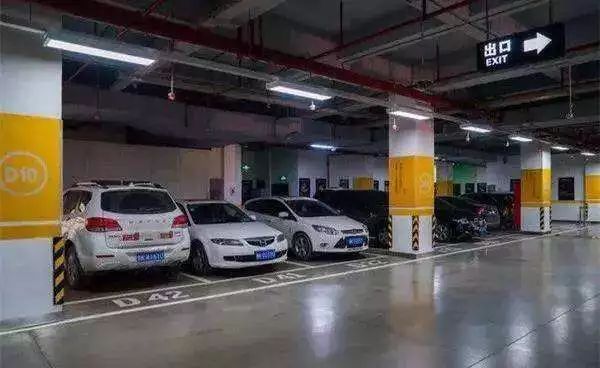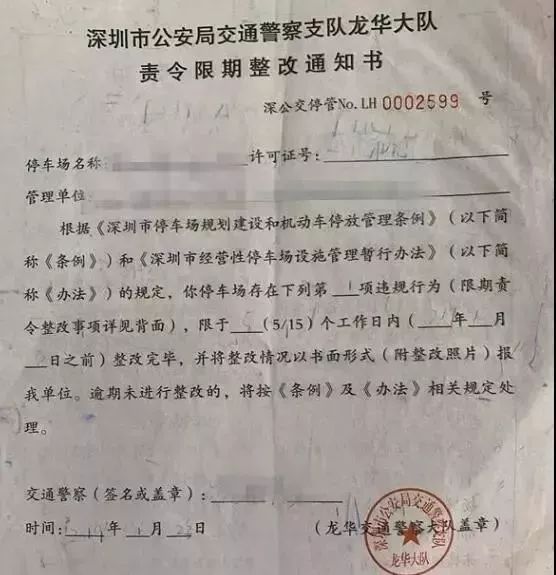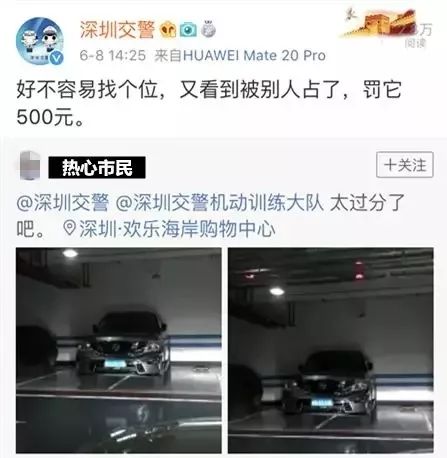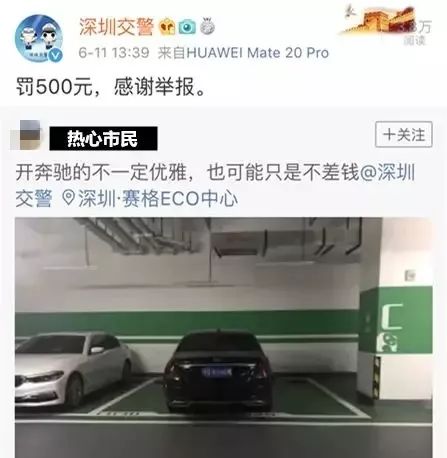Guo Fa [2011] No.42
People’s governments of all provinces, autonomous regions and municipalities directly under the Central Government, ministries and commissions and institutions directly under the State Council:
The Twelfth Five-Year Plan for National Environmental Protection is hereby printed and distributed to you, please implement it carefully.
the State Council
December 15th, 2011
Twelfth Five-Year Plan of National Environmental Protection
Protecting the environment is our basic national policy. This plan is formulated to promote the scientific development of environmental protection during the Twelfth Five-Year Plan period and accelerate the construction of a resource-saving and environment-friendly society.
I. Environmental situation
The CPC Central Committee and the State Council attach great importance to environmental protection as an important part of implementing the Scientific Outlook on Development, as an important means to transform the mode of economic development, and as a fundamental measure to promote the construction of ecological civilization. During the "Eleventh Five-Year Plan" period, the state took the significant reduction of the total discharge of major pollutants as a binding indicator of economic and social development, made great efforts to solve outstanding environmental problems, and made important progress in understanding, policies, systems and capabilities. Compared with 2005, the chemical oxygen demand and the total amount of sulfur dioxide emissions decreased by 12.45% and 14.29% respectively, exceeding the emission reduction task. With the rapid development of pollution control facilities, the sewage treatment rate of the city has increased from 52% in 2005 to 72%, and the installed capacity of thermal power desulfurization has increased from 12% to 82.6%. Let rivers and lakes recuperate in an all-round way, deepen pollution prevention and control in key river basins and regions, and improve environmental quality. The proportion of surface water in the national control section is better than Grade III, which is increased to 51.9%, and the average concentration of sulfur dioxide in urban air in China is reduced by 26.3%. The supervision of environmental law enforcement has been continuously strengthened, the comprehensive improvement of rural environment has achieved remarkable results, ecological protection has been effectively strengthened, nuclear and radiation safety has been controllable, the environmental awareness of the whole society has been continuously enhanced, the participation of the people has been further improved, and the environmental protection objectives and key tasks of the Eleventh Five-Year Plan have been fully completed.
At present, the overall deterioration of China’s environmental situation has not been fundamentally curbed, environmental contradictions are prominent, and the pressure continues to increase. Water pollution is serious in some key river basins and sea areas, and atmospheric haze is prominent in some regions and cities. The discharge of major pollutants in many areas exceeds the environmental capacity. Environmental pollution in rural areas has intensified, and heavy metals, chemicals, persistent organic pollutants, soil, groundwater and other pollution have emerged. In some areas, the ecological damage is serious, the ecosystem function is degraded, and the ecological environment is relatively fragile. Nuclear and radiation safety risks have increased. The people’s demands for the environment are constantly improving, and the number of sudden environmental incidents remains high. Environmental problems have become one of the important factors threatening human health, public safety and social stability. The pressure of global environmental problems such as biodiversity protection is increasing. The legal system of environmental protection is not perfect, the investment is still insufficient, the law enforcement power is weak, and the supervision ability is relatively backward. At the same time, with the continuous growth of population, the rapid advancement of industrialization and urbanization, the total energy consumption continues to rise, the amount of pollutants will continue to increase, and the environmental constraints of economic growth will be strengthened day by day.
II. Guiding ideology, basic principles and main objectives
(1) Guiding ideology.
Guided by Deng Xiaoping Theory and Theory of Three Represents, we will thoroughly implement the Scientific Outlook on Development, strive to improve the level of ecological civilization, effectively solve outstanding environmental problems that affect scientific development and harm people’s health, strengthen institutional innovation and capacity building, deepen the reduction of the total amount of major pollutants, strive to improve environmental quality, guard against environmental risks, comprehensively promote the historical transformation of environmental protection, actively explore new ways of environmental protection with low cost, good benefits, low emissions and sustainability, and accelerate the construction of a resource-saving and environment-friendly society.
(2) Basic principles.
-Scientific development and enhanced protection. Adhere to scientific development, accelerate the transformation of economic development mode, develop in protection and protect in development based on the carrying capacity of resources and environment, and promote the coordinated development of economy, society and resources and environment.
-Protecting the environment and benefiting the people and promoting harmony. Adhere to the people-oriented principle, put drinking clean water, breathing clean air and eating safe food in a more prominent strategic position, and effectively solve outstanding environmental problems related to people’s livelihood. Gradually realize equalization of basic public services for environmental protection, safeguard people’s environmental rights and interests, and promote social harmony and stability.
-putting prevention first and combining prevention with control. Insist on prevention from the source, put environmental protection through all aspects of planning, construction, production, circulation and consumption, and enhance the ability of sustainable development. Improve the construction and operation level of pollution control facilities and strengthen ecological protection and restoration.
-push ahead in an all-round way and make key breakthroughs. Adhere to the combination of solving overall and universal environmental problems and concentrating on solving environmental problems in key river basins, regions and industries, and establish an environmental protection strategic system, a comprehensive and efficient pollution prevention and control system, a sound environmental quality evaluation system, a sound environmental protection laws, regulations, policies and scientific and technological standards system, a complete environmental management and law enforcement supervision system, and a social action system with the participation of the whole people.
-classified guidance and hierarchical management. Adhere to local conditions and implement different environmental policies in different regions and industries. Encourage qualified areas to take more active environmental protection measures. We will improve the environmental supervision system of state supervision, local supervision and unit responsibility, and implement the environmental protection target responsibility system.
-government guidance and concerted efforts. Adhere to government guidance, clarify the main responsibility of enterprises, and strengthen departmental coordination. Strengthen environmental information disclosure and public opinion supervision, and mobilize the whole society to participate in environmental protection. Explore market-oriented means to promote environmental protection.
(3) Main objectives.
By 2015, the total discharge of major pollutants will be significantly reduced; The environmental safety of urban and rural drinking water sources has been effectively guaranteed, and the water quality has been greatly improved; Heavy metal pollution has been effectively controlled, and the prevention and control of pollution such as persistent organic pollutants, dangerous chemicals and hazardous wastes has achieved remarkable results; The construction and operation level of urban environmental infrastructure has been improved; The deterioration trend of ecological environment has been reversed; The ability of nuclear and radiation safety supervision has been significantly enhanced, and the level of nuclear and radiation safety has been further improved; The environmental supervision system has been improved.
Note: ① The total discharge of chemical oxygen demand and ammonia nitrogen includes the total discharge of industrial, urban life and agricultural sources, which is verified according to the dynamic update results of the pollution source survey in 2010.
② During the Twelfth Five-Year Plan period, the number of state-controlled sections of surface water increased from 759 to 970, among which the number of state-controlled sections of seven major water systems increased from 419 to 574; At the same time, the evaluation factors were increased from 12 to 21. According to this calculation, in 2010, the proportion of surface water quality in the national control section was worse than Grade V, and the proportion of surface water quality in the national control section of seven major water systems was better than Grade III, which was 17.7%.
③ During the "Twelfth Five-Year Plan" period, the scope of air environmental quality assessment increased from 113 key cities to 333 cities at or above the prefecture level. According to the annual average values of respirable particulate matter, sulfur dioxide and nitrogen dioxide, the proportion of air quality in cities at or above the prefecture level in 2010 was 72%.
Third, promote the emission reduction of major pollutants
(1) Intensifying structural adjustment.
Accelerate the elimination of backward production capacity. Strictly implement the "Guidance Catalogue for Industrial Structure Adjustment" and the "Guidance Catalogue for Eliminating Backward Production Technologies, Equipment and Products in Some Industries". Intensify the elimination of backward production capacity in industries such as steel, nonferrous metals, building materials, chemicals, electricity, coal, paper making, printing and dyeing, leather making, etc. Formulate the annual implementation plan, decompose the tasks into local and enterprises, and announce the list of enterprises with backward production capacity to the public. Establish an examination and approval mechanism linking new projects with pollution reduction and elimination of backward production capacity, and implement the system of equal or reduced production capacity replacement. The environmental impact approval of new construction and expansion projects in key industries should take the total discharge index of major pollutants as a precondition.
Focus on reducing the emission of new pollutants. Reasonably control the total energy consumption and promote the development of non-fossil energy. By 2015, non-fossil energy will account for 11.4% of primary energy consumption. Improve the level of coal washing and processing. Increase the supply of natural gas and coalbed methane, and reduce the proportion of coal in primary energy consumption. Piloting the total coal consumption control in key areas of joint prevention and control of atmosphere. Further improve the entry threshold for industries with high energy consumption, high emissions and overcapacity. Explore the establishment of an evaluation system of pollutant production intensity per unit product. Actively cultivate strategic emerging industries such as energy conservation, environmental protection and new energy, and encourage the development of energy conservation and environmental protection modes of transportation.
Vigorously promote clean production and develop circular economy. Improve the pollutant discharge standards and cleaner production evaluation indicators of papermaking, printing and dyeing, chemical industry, metallurgy, building materials, nonferrous metals, tanning and other industries, and encourage all localities to formulate stricter pollutant discharge standards. Fully implement the pollutant discharge permit system. Promote cleaner production demonstration in agriculture, industry, construction, business services and other fields. Deepen the demonstration pilot of circular economy, accelerate the industrialization of resource recycling, promote the development of circular economy in all aspects of production, circulation and consumption, and build a resource recycling system covering the whole society.
(two) efforts to reduce chemical oxygen demand and ammonia nitrogen emissions.
Increase the emission reduction of water pollutants in key areas and industries. Total emission control of total nitrogen or total phosphorus shall be implemented in eutrophic lakes and reservoirs and coastal areas prone to red tides such as the East China Sea and Bohai Sea. Total emission control of key heavy metal pollutants will be implemented in key areas for comprehensive prevention and control of heavy metal pollution. We will promote the control of total chemical oxygen demand and ammonia nitrogen emissions in papermaking, printing and dyeing and chemical industries, and the reduction ratio will be no less than 10% compared with 2010. Strictly control the Yangtze River Delta, Pearl River Delta and other regions of the paper, printing and dyeing, tanning, pesticides, nitrogen fertilizer and other industries to build new projects that simply expand production capacity. It is forbidden to build new projects such as non-ferrous, paper-making, printing and dyeing, chemical industry and leather making at the source of rivers in key river basins.
Improve the level of urban sewage treatment. Strengthen the construction of sewage pipe network, promote the transformation of rain and sewage separation, and speed up the construction of sewage treatment plants in county towns and key towns. By 2015, there will be about 160,000 kilometers of new urban sewage pipe network in China, with an additional daily sewage treatment capacity of 42 million tons. Basically, all counties and key towns will have sewage treatment capacity, and the load rate of sewage treatment facilities will increase to over 80%, and the urban sewage treatment rate will reach 85%. Promote the harmless treatment and disposal of sludge and the recycling of sewage. Strengthen the operation of sewage treatment facilities and assessment of pollutant reduction, and promote the construction of monitoring platform for urban sewage treatment plants. Dianchi Lake, Chaohu Lake, Taihu Lake and other key river basins and coastal urban sewage treatment plants should improve the level of nitrogen and phosphorus removal.
Promote pollution prevention and control of large-scale livestock and poultry breeding. Optimize the layout of farms, reasonably determine the scale of farming, improve farming methods, promote clean farming, and promote the resource utilization of farming wastes. Strictly implement the pollutant discharge standards for livestock and poultry breeding, and implement unified collection and treatment of pollutants in breeding areas and free-range intensive areas. By 2015, the proportion of supporting the construction of solid waste and sewage storage and treatment facilities in large-scale livestock and poultry farms and breeding communities nationwide will reach more than 50%.
(3) Increase the emission reduction of sulfur dioxide and nitrogen oxides.
Continue to promote pollution reduction in the power industry. Newly-built coal-fired units should simultaneously build desulfurization and denitrification facilities. Active coal-fired units without desulfurization facilities should speed up the elimination or construction of desulfurization facilities, and flue gas desulfurization facilities should cancel flue gas bypass in accordance with regulations. Accelerate the technical transformation of low-nitrogen combustion of coal-fired units and the construction of flue gas denitrification facilities. All coal-fired units with a single capacity of more than 300,000 kilowatts (inclusive) should be equipped with denitrification facilities. Strengthen the supervision of the operation of desulfurization and denitrification facilities, and reform those that can not meet the discharge standards stably within a time limit.
Accelerate the pace of desulfurization and denitrification in other industries. Promote the total emission control of sulfur dioxide in the iron and steel industry, fully implement flue gas desulfurization of sintering machines, and build desulfurization and denitrification facilities for new sintering machines. Strengthen the treatment of sulfur dioxide and nitrogen oxides in cement, petroleum and petrochemical, coal chemical and other industries. Industrial kilns in petroleum, petrochemical, nonferrous metals, building materials and other industries should be desulfurized. The new dry cement kiln should be reformed with low nitrogen combustion technology, and the new cement production line should be equipped with denitration facilities with efficiency not less than 60%. Carry out flue gas treatment of coal-fired boilers according to local conditions, install desulfurization and denitrification facilities in new coal-fired boilers, implement flue gas desulfurization in existing coal-fired boilers, and install low-nitrogen combustion devices in existing coal-fired boilers in the eastern region.
Carry out the control of nitrogen oxides in motor vehicles and ships. Implement the management of motor vehicle environmental protection signs. Accelerate the elimination of old cars, locomotives and ships. By 2015, the "yellow-label cars" registered and operated before 2005 will be basically eliminated. Improve the environmental access requirements of motor vehicles, strengthen the inspection of production consistency, and prohibit the production, sales and registration of vehicles that do not meet emission standards. Encourage the use of new energy vehicles. Fully implement the fourth-stage national motor vehicle emission standards, and implement stricter emission standards in areas where conditions permit. Improve the quality of vehicle fuel, encourage the use of new clean fuels, and supply vehicle fuel that meets the national fourth-stage standards nationwide. Actively develop urban public transport, explore and control the total number of motor vehicles in super-large and large cities.
Fourth, effectively solve outstanding environmental problems
(1) Improve the quality of water environment.
Strictly protect drinking water sources. Complete the examination and approval of urban centralized drinking water source protection areas, and ban illegal construction projects and sewage outlets in water source protection areas. Promote environmental improvement, restoration and standardization of water sources. Strengthen the supervision of toxic and harmful substances in the foreign exchange water area of water source protection areas. Centralized drinking water sources in cities above prefecture level should regularly carry out comprehensive analysis of water quality. Improve the disclosure system of environmental information on drinking water sources, and strengthen risk prevention and emergency warning.
Deepen the prevention and control of water pollution in key river basins. Define the priority control units of key river basins and implement zoning control. The Huaihe River Basin should focus on the control of ammonia nitrogen, focusing on the prevention and control of water pollution in the main stream of the Huaihe River and cities such as Zhengzhou, Kaifeng, Huaibei, Huainan, Bengbu, Bozhou, Heze, Jining, Zaozhuang, Linyi and Xuzhou, and the water quality of the main stream basically reaches Grade III. Haihe River Basin should strengthen the overall planning of water resources utilization and water pollution prevention and control, focus on the safety of drinking water, the improvement of urban water environment and the coordinated management of cross-border water pollution, greatly reduce the pollution load, and achieve a significant decline in the proportion of inferior V water quality sections. The Liaohe River basin should strengthen the comprehensive improvement of the urban water system environment, promote the construction of Liaohe protected areas, and realize the obvious improvement of the water quality of the main stream of the Liaohe River and its tributaries such as Zhaosutai River, Tiaozi River and Daliao River. Pollution control, water ecological protection and water conservation should be strengthened in the Three Gorges reservoir area and its upper reaches to ensure that the water quality in the upper reaches and the reservoir area remains excellent. The Songhua river basin should strengthen the comprehensive improvement of urban water system environment and the control of non-point source pollution, and the water quality in the state-controlled section should basically be eliminated. The middle and upper reaches of the Yellow River should focus on promoting the prevention and control of water pollution in tributaries such as Weihe River, Fenhe River and Huangshui River, strengthening the prevention and control of environmental risks in energy and chemical bases such as Ningdong, Erdos and northern Shaanxi, and strengthening the prevention and control of agricultural non-point source pollution in Hetao irrigation area, so as to greatly improve the water quality of tributaries and stabilize the main stream to meet the functional requirements. Efforts should be made to reduce the pollution load of total nitrogen and total phosphorus in Taihu Lake basin, and the water quality of the lake will be improved from inferior V to V, and the eutrophication trend will be curbed. Chaohu Lake basin should strengthen the control of aquaculture and pollution entering the lake, and reduce the pollution load of ammonia nitrogen, total nitrogen and total phosphorus.Strengthen the ecological restoration of the lake area, curb the eutrophication trend of the lake body, and basically eliminate the inferior V water quality of the main tributaries entering the lake. Dianchi Lake Basin should comprehensively promote the prevention and control of water pollution in lakes, ecological protection areas, guiding and utilization areas and water conservation areas, and improve the water quality of rivers and lakes entering the lake. The Danjiangkou reservoir area and the upstream of the middle route of South-to-North Water Transfer Project should strengthen the prevention and control of water pollution and soil erosion, promote the control of agricultural non-point source pollution, and achieve comprehensive water quality standards; Pollution control should be further deepened in the eastern water source area and along the line to ensure the quality of water transfer.
Do a good job in water pollution prevention and control in other river basins. We will intensify pollution prevention and control in the middle and lower reaches of the Yangtze River and the Pearl River Basin, and achieve stable and improved water quality. Take the southwest rivers, northwest inland rivers, southeast rivers, Poyang Lake, Dongting Lake, Hongze Lake, Fuxian Lake, liangzi lake, Bosten Lake, Ebinur Lake, Weishan Lake, Qinghai Lake and Erhai Lake as key areas to ensure and enhance water ecological security, explore the establishment of water ecological environment quality evaluation index system, carry out comprehensive assessment of water ecological security, and implement water pollution prevention and control and water ecological security guarantee measures. Strengthen the comprehensive management of Changhu Lake, Sanhu Lake, Bailu Lake, Honghu Lake and Yilong Lake in Yunnan Province. Strengthen environmental supervision and pollution prevention of rivers such as Heilongjiang, Wusuli River, Tumen River, Irtysh River and Yili River. Strengthen the protection of lakes with good water quality or fragile ecology.
Comprehensive prevention and control of marine environmental pollution and ecological damage. Adhere to the overall planning of land and sea, give consideration to both rivers and seas, and promote the comprehensive management of key sea areas such as the Bohai Sea. Implement the total pollutant discharge control system in key sea areas. Strengthen the connection between coastal waters and river basin pollution prevention. Strengthen environmental supervision of coastal engineering, marine engineering, marine dumping and ship pollution, and strictly control reclamation activities in ecologically sensitive areas. Reduce the emission intensity of pollutants from mariculture. Strengthen the construction of coastal shelterbelts and protect and restore typical marine ecosystems such as coastal wetlands, mangroves and coral reefs. Strengthen the protection of marine biodiversity. Gradually increase biological, red tide and oil spill monitoring projects in key sea areas, and strengthen emergency response to accidents such as oil spill at sea. Establish a data sharing mechanism for marine environmental monitoring. By 2015, the water quality in the coastal waters will remain stable as a whole, and the water quality in estuaries such as the Yangtze River, the Yellow River and the Pearl River and key bays such as the Bohai Sea will improve.
Promote the prevention and control of groundwater pollution. Carry out investigation and evaluation of groundwater pollution, and delimit groundwater pollution control areas, prevention and control areas and general protection areas. Strengthen supervision of groundwater environment in key industries. Prohibit groundwater pollution sources such as seepage wells and pits, and cut off pollution channels such as abandoned drilling wells and mines. Prevent underground engineering facilities, underground exploration and mining activities from polluting groundwater. Control the influence of hazardous waste, urban pollution and agricultural non-point source pollution on groundwater. Strictly prevent and control the pollution of polluted soil and sewage irrigation to groundwater. Pilot rehabilitation in areas where groundwater pollution is prominent, focusing on strengthening the prevention and control of groundwater pollution in North China. Conduct a demonstration of comprehensive prevention and control of seawater intrusion.
(two) the implementation of a variety of air pollutants comprehensive control.
Deepen particulate pollution control. Strengthen the control of industrial smoke and dust, promote the transformation of dust removal facilities in coal-fired power plants and cement plants, and all sintering (pelletizing) equipment in the iron and steel industry should adopt high-efficiency dust collectors, and strengthen the construction of dust removal facilities in technological processes. Coal-fired boilers with more than 20 tons of steam (inclusive) should be equipped with high-efficiency dust collectors, and other small and medium-sized coal-fired industrial boilers should be encouraged to use low-ash coal or clean energy. Strengthen dust control on construction sites, muck transportation and roads.
Strengthen the control of volatile organic pollutants and toxic waste gas. Strengthen the emission control of volatile organic pollutants in the production, transportation and storage process of petrochemical industry. Encourage the use of water-based, low-toxic or low-volatile organic solvents, promote the pollution control of organic waste gas in fine chemical industry, and strengthen the recycling of organic waste gas. Implement the comprehensive management project of oil and gas recovery in gas stations, oil depots and tankers. Monitor volatile organic pollutants and toxic waste gas, and improve pollutant emission standards of key industries. Strict supervision of pollution sources will reduce the emission of toxic and harmful waste gases such as mercury, lead and dioxin.
Promote the prevention and control of urban air pollution. In key areas of joint prevention and control of air pollution, establish a regional air environmental quality evaluation system, carry out coordinated control of various pollutants, implement special emission limits of regional air pollutants, and focus on prevention and control of thermal power, steel, nonferrous metals, petrochemicals, building materials, chemicals and other industries. Monitoring of pollutants such as ozone and fine particulate matter (PM2.5) will be carried out in the Beijing-Tianjin-Hebei, Yangtze River Delta and Pearl River Delta regions, and regional joint law enforcement inspections will be carried out. By 2015, the compound air pollution in these regions will be controlled, and the air environmental quality of all cities will meet or be better than the national secondary standard, and the pollution of acid rain, haze and photochemical smog will be significantly reduced. Implement clean air action in cities and strengthen the prevention and control of air pollution in Urumqi and other cities. The implementation of urban air quality classification management, cities that have not yet reached the standard should formulate and implement the standard plan. Strengthen the control of cooking fume pollution and the treatment of odor pollution.
Strengthen the quality management of urban and rural acoustic environment. Strengthen the prevention and control of noise pollution in traffic, construction, industry, social life and other fields. Delineate or adjust the functional areas of acoustic environment, strengthen the management of urban acoustic environment standards, and expand the area of functional areas that meet the standards. Do a good job in controlling key noise sources and solve the problem of noise disturbing people. Strengthen the capacity building of noise supervision.
(3) Strengthening soil environmental protection.
Strengthen the construction of soil environmental protection system. Improve soil environmental quality standards, and formulate supervision and management measures and technical specifications for soil environmental protection in agricultural production areas. Study and establish the system of soil environmental quality evaluation and filing for construction project land and the system of investigation, evaluation and restoration of contaminated soil, and clarify the responsible subjects and requirements for treatment and restoration.
Strengthen soil environmental supervision. Deepen the investigation of soil environment and focus on sensitive areas such as grain and vegetable bases and areas affected by mineral resources development. Carry out pilot projects of soil pollution assessment and safety grade division in agricultural products producing areas. Strengthen the environmental supervision of polluted sites in cities and industrial and mining enterprises, carry out environmental risk assessment of the reuse of polluted sites, incorporate the environmental risk assessment of sites into the environmental impact assessment of construction projects, and prohibit land circulation and development and utilization of polluted sites that have not been assessed and harmlessly treated. Measures should be taken to prevent the spread of pollution in contaminated sites that have been assessed as having a serious impact on human health, and they should not be used for residential development, and existing residents should be relocated.
Promote the remediation of contaminated sites and soil in key areas. Focusing on typical contaminated sites and contaminated farmland around large and medium-sized cities, heavily polluting industrial and mining enterprises, centralized pollution control facilities, key areas for heavy metal pollution prevention and control, drinking water sources, waste storage sites, etc., pilot demonstrations on pollution control and remediation of contaminated sites and soil pollution will be carried out. It is necessary to increase the investment in remediation of soil pollution in historical sites such as the loss of responsible subjects.
(4) Strengthening ecological protection and supervision.
Strengthen the protection and construction of ecological functional areas. Strengthen the protection and management of 25 national key ecological function area, such as Daxinganling Forest and Changbai Mountain Forest, formulate management measures and improve management mechanism. Strengthen the construction of ecological environment monitoring and evaluation system, and carry out continuous monitoring and regular evaluation of ecosystem structure and function. Implement ecological protection and restoration projects. Strictly control the total amount of pollutants discharged from key ecological functional areas and the environmental standards for industrial access.
Improve the level of construction and supervision of nature reserves. Carry out basic investigation and evaluation of nature reserves, and make overall plans to improve the development plan of nature reserves throughout the country. Strengthen the construction and management of nature reserves, strictly control the adjustment of the scope and functional zoning of nature reserves, strictly limit the development and construction activities involving nature reserves, and standardize the management of land and sea areas in nature reserves. Strengthen the standardization of national nature reserves. Optimize the spatial structure and layout of nature reserves, and focus on strengthening the construction of natural reserves of rivers and aquatic ecosystems in areas such as southwest alpine valleys, hilly areas in central and southern China and coastal waters. Rescue and protect the remaining natural habitats in densely populated areas of central and eastern China. By 2015, the proportion of land nature reserves in the national territory will be stable at 15%.
Strengthen biodiversity protection. Continue to implement the Biodiversity Conservation Strategy and Action Plan of China (2011-2030), strengthen the protection of priority areas for biodiversity protection, and complete the background investigation and assessment of biodiversity in 8 to 10 priority areas. Carry out biodiversity monitoring pilot projects and the construction of biodiversity protection demonstration zones and restoration demonstration zones. Promote the construction of germplasm resources banks in key areas and industries. Strengthen the entry and exit supervision of biological species resources. Study and establish a system for obtaining biological genetic resources and sharing benefits. Study and formulate laws and regulations to prevent the invasion of alien species and strengthen the safety management of genetically modified organisms. Strengthen the supervision of the environmental release of genetically modified organisms and the utilization of microorganisms for environmental improvement purposes, and carry out the prevention and control of alien harmful species. Publish a list of threatened animals and plants and alien invasive species. By 2015, 90% of the national key protected species and typical ecosystems will be protected.
Promote ecological environment supervision of resource development. Implement ecological function zoning and standardize resource development and utilization activities. Strengthen ecological supervision in the development of minerals, hydropower, tourism resources and transportation infrastructure construction, and implement the responsibilities of related enterprises in ecological protection and restoration. Implement the deposit system for mine environmental management and ecological restoration.
V. Strengthening prevention and control of environmental risks in key areas
(a) to promote the whole process of environmental risk management.
Conduct environmental risk investigation and assessment. Focus on enterprises that emit heavy metals, hazardous wastes, persistent organic pollutants and produce and use hazardous chemicals, comprehensively investigate key environmental risk sources and environmental sensitive points, and establish a database of environmental risk sources. Study the generation, spread, prevention and control mechanism of environmental risks. Investigate environmental pollution and health damage, and establish an environmental and health risk assessment system.
Improve environmental risk management measures. Improve the prevention-oriented environmental risk management system and implement the main responsibility of enterprises. Formulate environmental risk assessment norms and improve relevant technical policies, standards and engineering construction norms. The examination and approval of environmental impact assessment of construction projects should put forward clear requirements for preventing environmental risks. The establishment of enterprise environmental emergencies reporting and emergency treatment system, characteristic pollutants monitoring and reporting system. Conduct regular special inspections on key risk sources, important and sensitive areas, supervise high-risk enterprises, rectify or relocate within a time limit, and shut down those who do not have the conditions for rectification according to law. Establish an environmental emergency rescue network, improve the environmental emergency plan, and regularly carry out environmental accident emergency drills. Improve the emergency rescue system for sudden environmental incidents, build an environmental emergency rescue mechanism with government guidance, departmental coordination, graded responsibility and social participation, and scientifically and properly handle sudden environmental incidents according to law.
Establish an environmental accident handling and damage compensation recovery mechanism. Taking effective prevention and proper response to major environmental emergencies as an important task of local people’s governments is included in the environmental protection target responsibility system. Promote the construction of environmental pollution damage appraisal and evaluation institutions, establish appraisal and evaluation mechanism, and improve the damage compensation system. Establish a technical system for damage assessment, damage compensation and damage repair. We will improve the environmental pollution liability insurance system and study the establishment of a compulsory insurance system for enterprises with high environmental risks such as heavy metal emissions.
(2) Strengthening nuclear and radiation safety management.
Improve the safety level of nuclear energy and nuclear technology utilization. Strengthen the analysis, prediction and early warning of the impact of major natural disasters on nuclear facilities. Further improve the reliability of design, manufacture, installation and operation of nuclear safety equipment. Strengthen the safety rectification of research reactors and nuclear fuel cycle facilities, and restrict the operation or gradually shut down facilities that cannot meet safety requirements. Standardize the behavior of nuclear technology utilization, carry out comprehensive safety inspection of nuclear technology utilization units, and implement compulsory retirement of nuclear technology utilization projects with great security risks.
Strengthen nuclear and radiation safety supervision. Improve the nuclear and radiation safety evaluation methods. Strengthen the safety supervision of operating nuclear facilities, strengthen the safety analysis and evaluation of nuclear facilities under construction and proposed, and improve the nuclear safety licensing system. Improve the safety management of early nuclear facilities. Strengthen safety supervision over the production, transportation and storage of nuclear materials and radioactive materials. Strengthen the safety supervision of nuclear technology utilization and improve the radiation safety management information system of nuclear technology utilization. Strengthen radiation environmental quality monitoring and supervision monitoring of nuclear facility effluent. Improve the international cooperation mechanism of nuclear and radiation safety supervision, and strengthen nuclear safety publicity and popular science education.
Strengthen the prevention and control of radioactive pollution. Promote early decommissioning of nuclear facilities and radioactive pollution control. Carry out the decommissioning of civil radiation irradiation devices and the recycling of waste sources. Accelerate the capacity building of radioactive waste storage, treatment and disposal, and basically eliminate the safety risks of low-level radioactive waste liquid left over from history. Accelerate the pollution control of uranium mines and associated radioactive mines, shut down uranium smelting facilities that do not meet the safety requirements, and establish a long-term monitoring mechanism for uranium smelting decommissioning treatment projects.
(three) to curb the high incidence of heavy metal pollution incidents.
Strengthen the prevention and control of heavy metal pollution in key industries and regions. Focus on non-ferrous metal ore (including associated ore) mining and dressing industry, non-ferrous metal smelting industry, lead storage battery manufacturing industry, leather and its products industry, chemical raw materials and chemical products manufacturing industry, increase prevention and control efforts, and accelerate the pace of eliminating backward production capacity of heavy metal-related enterprises. Reasonably adjust the layout of heavy metal-related enterprises, gradually improve the industry access threshold, and strictly implement the health protection distance. Adhere to the replacement of new production capacity and eliminated production capacity by equal amount or reduction, and prohibit the new reconstruction and expansion of projects that increase heavy metal pollutant emissions in key areas. Encourage all provinces (autonomous regions and municipalities) to explore the pilot of heavy metal emission replacement and trading in their non-key areas. Formulate and implement special emission limits for heavy metal pollutants in key regions and industries. Strengthen the comprehensive control of heavy metal pollution in Xiangjiang River and other river basins and regions. By 2015, the emission of heavy metal pollutants in key areas will be reduced by 15% compared with 2007, and the emission of heavy metal pollutants in non-key areas will not exceed the 2007 level.
Implement comprehensive prevention and control of heavy metal pollution sources. Manage heavy metal-related enterprises as key pollution sources, establish accounts for the generation and discharge of heavy metal pollutants, and strengthen the supervisory monitoring and inspection system. Conduct compulsory cleaner production audit for key enterprises every two years. Promote the technological progress of heavy metal-related industries and encourage enterprises to carry out advanced treatment. Encourage lead battery manufacturing, nonferrous metal smelting, leather and its products industry, electroplating and other industries to implement similar integration and park management, and strengthen the environmental protection requirements of the park. Improve the health hazard monitoring and diagnosis and treatment system of heavy metal pollution.
(four) to promote the safe treatment and disposal of solid waste.
Strengthen the prevention and control of hazardous waste pollution. Implement the whole process management system of hazardous waste, determine the list of hazardous waste generating units under key supervision, strengthen the standardized management of hazardous waste generating units and business units, and put an end to illegal transfer of hazardous waste. Investigate and evaluate the utilization and disposal facilities built by enterprises, and promote the industrialization, specialization and large-scale development of hazardous waste utilization and disposal. Control the amount of hazardous waste landfill. Prohibit illegal processing and utilization facilities of waste lead-acid batteries. Standardize the management of hazardous wastes from non-industrial sources such as laboratories. Accelerate the safe disposal of historical chromium slag, and ensure that the newly added chromium slag is harmlessly utilized and disposed. Strengthen the whole process management of medical waste and the construction of facilities for harmless disposal, promote the harmless management of medical waste in rural areas, towns and remote areas according to local conditions, and basically realize the harmless disposal of medical waste in cities above prefecture level by 2015.
Strengthen the prevention and control of industrial solid waste pollution. We will improve preferential policies to encourage the utilization and disposal of industrial solid waste, strengthen the development of comprehensive utilization and disposal technology of industrial solid waste, and strengthen pollution prevention and control of bulk industrial solid waste such as coal gangue, fly ash, industrial by-product gypsum, smelting and chemical waste residue. By 2015, the comprehensive utilization rate of industrial solid waste will reach 72%. We will implement the extended producer responsibility system, standardize the recycling activities of waste electrical and electronic products, build a recycling system for waste materials and a centralized processing park to promote the comprehensive utilization of resources. Strengthen the management of imported waste circle.
Improve the level of domestic waste treatment. Accelerate the construction of urban domestic waste treatment facilities. By 2015, the harmless treatment rate of urban domestic waste in China will reach 80%, and all counties have the ability to treat domestic waste harmlessly. We will improve the system of classified recovery of domestic waste, improve the system of classified recovery, closed transportation and centralized treatment, and strengthen the supervision of facility operation. Remediation of facilities and places for simple garbage disposal or stacking, and ecological restoration and transformation of closed landfills and old garbage dumps. Encourage garbage anaerobic gasification, incineration power generation and heating, landfill gas power generation, and resource utilization of kitchen waste. Promote the construction of landfill leachate and waste incineration fly ash disposal projects. We will carry out a pilot project of collaborative treatment of domestic garbage and sludge in industrial production processes.
(five) improve the chemical environmental risk prevention and control system.
Strict environmental supervision of chemicals. Improve the environmental management registration system for hazardous chemicals and new chemical substances. Formulate the elimination list of toxic and harmful chemicals, and eliminate chemicals that are highly toxic, difficult to degrade and highly harmful to the environment according to law. Make a list of key environmental management chemicals and restrict the production and use of chemicals with high environmental risks. Improve relevant industry access standards, environmental quality standards, emission standards and monitoring technical specifications, implement emission and transfer reporting systems, and carry out mandatory cleaner production audits. Improve the chemical environmental management institutions. Establish a lifelong accountability system for chemical environmental pollution responsibility and an administrative accountability system for the whole process.
Strengthen chemical risk prevention and control. Strengthen the environmental management of chemical parks, strictly examine and approve the environmental impact assessment of newly-built chemical parks, and strengthen the upgrading and transformation of existing chemical enterprise concentration areas. Newly-built projects involving hazardous chemicals should enter chemical parks or chemical gathering areas, and enterprises outside the existing chemical parks should gradually move into the parks. Formulate standards for the construction of environmental protection facilities in chemical parks, and improve the construction of related facilities and environmental emergency systems in the parks. Strengthen the management and disposal of hazardous chemical wastes and contaminated sites in key environmental management categories. Promote the construction of temporary storage of abandoned hazardous chemicals in hazardous chemicals enterprises and the construction of treatment and disposal capacity. Focus on iron ore sintering, electric arc furnace steelmaking, recycled non-ferrous metal production, waste incineration and other industries, strengthen the prevention and control of dioxin pollution, and establish a sound prevention and control system and long-term supervision mechanism for dioxin pollution; By 2015, the emission intensity of dioxin in key industries will be reduced by 10%.
Six, improve the basic public service system of environmental protection.
(1) Promoting the equalization of basic public services for environmental protection.
Formulate national environmental function zoning. According to the differences of major environmental functions in different regions, aiming at maintaining environmental health, conserving natural ecological safety and ensuring environmental safety of food producing areas, and combining with the national main functional area planning, the national environmental functional zoning is formulated, and "ecological red lines" are delineated in key ecological functional areas, sensitive areas of land and marine ecological environment, fragile areas and other areas, and environmental objectives, policies and environmental standards for different regions are formulated, and classified guidance and zoning management are implemented.
We will intensify environmental management in areas with optimized development and key development, implement strict pollutant discharge standards in combination with environmental capacity, greatly reduce the total amount of pollutant discharge, strengthen environmental risk prevention, and protect and expand ecological space. Strengthen the environmental supervision of the main producing areas of agricultural products and strengthen the prevention and control of soil erosion and aquaculture pollution. Conservation zone, a natural and cultural city, is subject to compulsory protection according to law, maintaining the authenticity and integrity of natural ecology and cultural heritage, closing or moving out polluting enterprises according to law, and realizing "zero emission" of pollutants. Strict environmental access to energy bases and mineral resource base and other regions will guide the rational and orderly development of natural resources.
Implement the regional environmental protection strategy. The western region should adhere to ecological priority, strengthen environmental supervision of hydropower, minerals and other resources and energy development activities, protect and improve its ecological service function, and build a national ecological security barrier. Sanjiangyuan area should further promote the construction of ecological protection comprehensive experimental zone. Ecological management and desertification control should be strengthened in Tarim River basin. Hubao Eyu, Guanzhong-Tianshui, Lanzhou-Xining, Ningxia along the Yellow River, the northern slope of Tianshan Mountain and other areas should strictly limit the development of high-water consumption industries, improve the utilization level of water resources, and control soot-type air pollution during heating period. Chengdu-Chongqing, central Guizhou, central Yunnan and central and southern Tibet should strengthen the prevention and control of acid rain pollution, strengthen the control of rocky desertification and the protection of plateau lakes.
Northeast China should strengthen the protection of forests and other ecosystems, carry out wetland restoration in Sanjiang Plain and Songnen Plain, strengthen comprehensive control of soil erosion and desertification in black land, and strengthen soil environmental protection in agricultural products producing areas in Northeast Plain. Central and southern Liaoning, Changjitu, Hadaqi and Musui areas should strengthen the control of urban air pollution during heating period, promote the prevention and control of pollution in Songhua River, Liaohe River basin and coastal waters, strengthen the comprehensive control of coal mining subsidence areas and the restoration of mine environment, and strengthen the ecological environment supervision of oil and other resources development activities.
The central region should effectively maintain the carrying capacity of regional resources and environment, improve the level of urban and rural environmental infrastructure construction, and maintain the overall stability of environmental quality. Taiyuan Urban Agglomeration and Central Plains Economic Zone should strengthen regional air pollution control cooperation, strictly limit the development of high-water consumption industries, and strengthen the ecological restoration of coal mining subsidence areas. Wuhan City Circle, Changsha-Zhuzhou-Xiangtan City Group, Wanjiang City Belt and other regions should take the regional resource carrying capacity and ecological environment capacity as an important basis for undertaking industrial transfer, strictly control the access threshold of resource conservation and environmental protection, coordinate urban and rural environmental protection, and accelerate the construction of a resource-saving and environment-friendly society. Strengthen the protection of ecological environment in Poyang Lake Ecological Economic Zone.
The eastern region should greatly reduce the total amount of pollutants discharged, accelerate the transformation of economic development mode, and resolve the bottleneck of resources and environment. Beijing-Tianjin-Hebei, Yangtze River Delta, Pearl River Delta and other regions should accelerate the innovation of environmental management system and mechanism, and effectively control regional compound air pollution. Hebei coastal areas, Jiangsu coastal areas, Zhejiang Zhoushan Islands New Area, the west side of the Taiwan Strait, Shandong Peninsula and other areas should further improve the efficiency of resource and energy utilization and protect coastal areas and biodiversity. Accelerate the environmental infrastructure construction of Hainan International Tourism Island.
Promote the equalization of basic public services for regional environmental protection. Reasonably determine the scope and standards of basic public services for environmental protection, strengthen urban and rural and regional overall planning, and improve the basic public service system for environmental protection. Through general transfer payments and ecological compensation, the central government has increased its support for the western region, prohibited development areas, restricted development areas and areas with special difficulties, and improved the supply level of basic public services for environmental protection. Local people’s governments at all levels should ensure the expenditure on basic public services for environmental protection and strengthen the capacity building of environmental supervision at the grass-roots level.
(2) Improve the level of rural environmental protection.
Ensure the safety of rural drinking water. Carry out investigation and evaluation of rural drinking water sources, and promote the delineation of rural drinking water source protection areas or protection areas. Strengthen the comprehensive improvement of drinking water source environment. Establish and improve the environmental supervision system of rural drinking water sources, and strengthen law enforcement inspection. Carry out publicity and education on environmental protection to raise the awareness of rural residents on water source protection. Promote the integration of urban and rural water supply in areas where conditions permit.
Improve the treatment level of domestic sewage and garbage in rural areas. Encourage towns and large-scale villages to build centralized sewage treatment facilities, and integrate the sewage from towns and villages around the city into the urban sewage collection pipe network for unified treatment. Villages living in scattered areas should promote the construction of decentralized, low-cost and easy-to-maintain sewage treatment facilities. Strengthen the construction of collection, transportation and disposal facilities for rural domestic garbage, and make overall plans for the construction of harmless treatment facilities and collection and transportation systems in towns and villages around cities and counties; In areas with inconvenient transportation, we should explore the local treatment mode and guide rural domestic garbage to realize source classification, local reduction and resource utilization.
Improve the level of pollution prevention and control of rural planting and aquaculture. Guide farmers to use biological pesticides or pesticides with high efficiency, low toxicity and low residue, and pesticide packaging should be treated harmlessly. Vigorously promote soil testing and formula fertilization. Promote the development of ecological agriculture and organic agriculture. Strengthen the resource utilization of agricultural production wastes such as discarded agricultural films and straws. Carry out aquaculture pollution investigation to reduce the aquaculture area and the number of feeding in Taihu Lake, Chaohu Lake and Hongze Lake.
Improve the rural environmental quality in key areas. We will implement the target responsibility system for comprehensive environmental improvement in rural areas, implement rural clean-up projects, develop and popularize applicable comprehensive improvement models and technologies, and focus on solving the problems of villages and market towns with outstanding environmental pollution. By 2015, we will complete the task of comprehensive environmental improvement in 60,000 established villages. Optimize the layout of industrial development in rural areas, strictly enforce environmental access for industrial projects, and prevent urban and industrial pollution from transferring to rural areas. Comprehensive treatment should be carried out for the residual pollution after the relocation and shutdown of chemical and electroplating enterprises in rural areas.
(3) Strengthening the construction of environmental supervision system.
Focusing on infrastructure, security and talents, we will promote the equalization of basic public services for environmental supervision. By 2015, we will basically form a supervision system for pollution sources and total emission reduction, an environmental quality monitoring and evaluation system, an environmental early warning and emergency response system, and initially establish a basic public service system for environmental supervision.
Improve the statistics, monitoring and assessment system of pollution reduction. Strengthen the construction, supervision and management, operation and maintenance of automatic monitoring system for pollution sources. Strengthen the capacity building of rural and motor vehicle emission reduction supervision. We will comprehensively promote the standardization of environmental protection capabilities such as monitoring, supervision, education, statistics and information, and greatly enhance the basic environmental supervision capabilities of cities and counties. In Beijing, Tianjin, Hebei, Yangtze River Delta, Pearl River Delta and other economically developed areas and heavily polluted areas, as well as other conditional areas, the environmental monitoring team will be extended to towns and streets. Focus on county-level and some prefecture-level monitoring and supervision institutions in the central and western regions, and promote the construction of grassroots environmental monitoring and law enforcement business houses. Carry out agricultural and rural environmental statistics. Carry out research on the total emission control of non-point source pollutants, and explore the establishment of a certification system for non-point source pollution reduction.
Promote the construction of environmental quality monitoring and assessment system. Optimize the national environmental monitoring sections (points) and build an environmental quality evaluation, assessment and early warning network. Construction of national environmental monitoring sites in key areas to improve the automatic monitoring level of the national monitoring network. Improve the monitoring capacity of regional characteristic pollutants, carry out monitoring of emission sources of characteristic pollution factors of typical environmental problems such as heavy metals and volatile organic compounds, and encourage the monitoring of characteristic pollutants to be included in the local daily monitoring scope. We will carry out pilot projects for monitoring the water quality of rural drinking water sources and village rivers (reservoirs), promote the construction of air background stations or regional stations in typical rural areas, strengthen the construction of mobile monitoring capacity, improve the coverage rate of environmental monitoring in rural areas, and start the investigation and evaluation of rural environmental quality. Carry out biological monitoring. Promote the construction and application of environmental special satellites, establish a national ecological environment monitoring network combining satellite remote sensing monitoring with ground monitoring, and carry out ecological environment quality monitoring and evaluation. Building a national radiation environmental monitoring network.
Strengthen the construction of environmental early warning and emergency response system. Accelerate the construction of national, provincial and municipal automatic monitoring systems and establish early warning monitoring systems. Improve the basic, statistical and operational application capabilities of environmental information and build an environmental information resource center. By means of Internet of Things and electronic identification, the whole process of storage and transportation of dangerous chemicals is monitored. Strengthen the standardization of environmental emergency response capability. Strengthen the construction of environmental emergency and supervision institutions in key river basins and regions. We will improve the nuclear and radiation environmental monitoring system, establish a supervisory monitoring system for important nuclear facilities and a real-time online monitoring system for effluent from other nuclear facilities, and promote the construction of national nuclear and radiation safety supervision technology research and development bases, key laboratories and business buildings. Strengthen the emergency response and anti-terrorism capacity building of nuclear and radiation accidents, and improve the emergency decision-making, command and dispatch system and emergency material reserve.
Improve the ability to guarantee basic public services for environmental supervision. Establish funding guarantee channels and mechanisms, and ensure the operation of national and local environmental supervision networks, equipment update and maintenance and renovation of business premises in accordance with the operating funding quota standards and update mechanisms. Strengthen team building and improve the quality of personnel. Study and establish nuclear and radiation safety supervision and technical qualification management system for personnel in important positions of nuclear safety. Improve the training mechanism and strengthen the training of environmental supervisors at the city and county levels, especially in the central and western regions. Cultivate and introduce high-end talents. Regularly carry out environmental professional skills competitions.
VII. Implementing Major Environmental Protection Projects
In order to implement the objectives and tasks of environmental protection in the Twelfth Five-Year Plan, it is necessary to actively implement various environmental protection projects (the investment demand for environmental protection in the whole society is about 3.4 trillion yuan), among which 8 key environmental protection projects are given priority and a number of environmental basic investigations and pilot demonstrations are carried out, with an investment demand of about 1.5 trillion yuan. It is necessary to make full use of the market mechanism to form a diversified investment pattern and ensure that the project investment is in place. Enterprises and local people’s governments at all levels are the main input to the project, and the central government gives support according to different situations. It is necessary to regularly carry out performance evaluation of engineering projects to improve investment efficiency.
Eight, improve policies and measures
(a) the implementation of environmental target responsibility system.
Formulate an index system for ecological civilization construction and incorporate it into the performance evaluation of local people’s governments at all levels. Implement a one-vote veto system for environmental protection. Continue to promote the assessment of total emission reduction of major pollutants and explore the supervision and assessment of environmental quality. Implement the environmental target responsibility system, regularly publish assessment results such as emission reduction of major pollutants, environmental quality, implementation of pollution prevention and control planning in key river basins, and conduct interviews with local governments that have not completed environmental protection targets or are responsible for major environmental emergencies, implement regional approval restrictions, and investigate relevant leadership responsibilities.
(2) Improve the comprehensive decision-making mechanism.
Improve the environmental management system in which the government is responsible, the environmental protection departments are unified in supervision and management, the relevant departments are coordinated, and the whole society participates together. Give full play to the role of the inter-ministerial joint meeting on environmental protection, and promote inter-departmental coordination and information sharing. The total amount control requirements of major pollutants, environmental capacity, environmental function zoning and environmental risk assessment are taken as the decision-making basis for regional and industrial development. Carry out environmental impact assessment on key river basins, regional development and industry development planning and construction projects according to law. Improve the linkage mechanism between planning environmental impact assessment and construction project environmental impact assessment. Improve the environmental protection acceptance system for construction projects. Strengthen the supervision and management of environmental impact assessment review. Conduct environmental impact assessment on the overall urban planning of key environmental protection cities, and explore the preparation of the overall urban environmental protection planning.
(3) Strengthening the construction of laws and regulations.
We will strengthen the basic research on the revision of laws such as the Environmental Protection Law, the Air Pollution Prevention Law, the Cleaner Production Promotion Law, the Solid Waste Pollution Prevention Law, the Environmental Noise Pollution Prevention Law and the Environmental Impact Assessment Law, and study and formulate laws and regulations such as total pollutant control, drinking water source protection, soil environmental protection, pollutant discharge permit management, livestock and poultry breeding pollution prevention, motor vehicle pollution prevention, toxic and harmful chemicals management, nuclear safety and radioactive pollution prevention, and environmental pollution damage compensation.
Coordinate the formulation (revision) of environmental quality standards, pollutant discharge standards, nuclear power standards, civil nuclear safety equipment standards, environmental monitoring standards, environmental basic standards and environmental protection standards such as management standards. Improve the environmental quality standards of atmosphere, water, ocean and soil, improve the emission control requirements of conventional pollutants and toxic and harmful pollutants in pollutant emission standards, and strengthen the indirect emission control of water pollutants and the environmental quality monitoring requirements around enterprises. Promote the identification of environmental risk sources, environmental risk assessment and the construction of emergency environmental protection standards for environmental emergencies. Encourage local governments to formulate and implement local pollutant discharge standards.
(4) Improve environmental and economic policies.
Implement the electricity price policy of flue gas desulfurization in coal-fired power plants, study and formulate the electricity price policy of denitrification, and implement preferential policies for enterprises such as sewage treatment, sludge harmless treatment facilities, desulfurization and denitrification in non-power industries and garbage disposal facilities. For non-resident water use, the system of excessive progressive price increase should be gradually implemented, and the policy of differential water price should be implemented for high water consumption industries. Study on policies and measures to encourage "zero discharge" of enterprise wastewater. Improve the system of paid acquisition and use of emission rights and develop the emission trading market.
We will promote the reform of environmental taxes and fees and improve the system of sewage charges. Fully implement the polluter pays principle, improve the sewage treatment charging system, and the charging standard should gradually meet the needs of stable operation of sewage treatment facilities and harmless disposal of sludge. Reform the way of collecting garbage disposal fees, increase the intensity of collection, and moderately raise the standard of garbage disposal fees and financial subsidies.
Establish a credit evaluation system for corporate environmental behavior and increase credit support for enterprises and projects that meet environmental protection requirements and credit principles. Establish a green rating system for banks, and link the effectiveness of green credit with the performance evaluation, institutional access and business development of bank staff. Promote government green procurement, gradually increase the proportion of environmental protection products, and study and implement government procurement of environmental protection services. Formulate and improve the comprehensive list of environmental protection.
Explore the establishment of special funds for national ecological compensation. To study, formulate and implement regulations on ecological compensation. Establish ecological compensation mechanisms such as river basins and key ecological functional areas. Carry out the reserve system for sustainable development of resource-based enterprises.
(5) Strengthen scientific and technological support.
Improve the basic research and application ability of environmental science and technology. Consolidate the scientific basis for the formulation of environmental benchmarks and standards, and improve environmental management technical systems such as environmental investigation and evaluation, monitoring and early warning, and risk prevention. Promote the construction of national key environmental protection laboratories, engineering technology centers and field observation and research stations. Organize and implement major national science and technology projects such as water pollution control and treatment, and vigorously develop high-tech, key technologies and common technologies for pollution control, ecological protection and environmental risk prevention. Research and development of nitrogen oxides, heavy metals, persistent organic pollutants, dangerous chemicals and other control technologies and technologies suitable for China’s national conditions, such as soil remediation and agricultural non-point source pollution control. Vigorously promote the research and development of integrated control technologies such as desulfurization and denitrification integration, phosphorus and nitrogen removal integration and heavy metal removal. Strengthen the demonstration and popularization of advanced technology.
(6) Developing environmental protection industry.
Focusing on the needs of key projects, we will strengthen policy drive, vigorously promote the development of equipment manufacturing industry focusing on sewage treatment, garbage disposal, desulfurization and denitrification, soil remediation and environmental monitoring, and develop and demonstrate a number of new environmentally friendly materials, chemicals and environmentally friendly products. Promote the construction of cross-industry and cross-enterprise recycling consortia. We will implement the qualification licensing system for the operation of environmental protection facilities, promote the professionalization, socialization and marketization of the construction and operation of pollution facilities such as flue gas desulfurization and denitrification, urban sewage and garbage treatment, and hazardous waste treatment and disposal, and implement the franchise of flue gas desulfurization facilities. Formulate statistical standards for environmental protection industry. To study and formulate policies and measures to improve the level of environmental services such as project investment and financing, design and construction, facility operation and maintenance, technical consultation, cleaner production audit, product certification and personnel training.
(7) Increase investment.
Environmental protection should be included in the budgets of fiscal years at all levels and investment should be gradually increased. Timely increase the funding arrangements for environmental protection capacity building at the same level. Increase support for environmental protection in the central and western regions. Focusing on promoting the equalization of basic environmental public services and improving environmental quality, we will improve the general transfer payment system and increase the transfer payment for environmental protection in national key ecological function area, central and western regions and ethnic autonomous areas. We will deepen policies such as "promoting prevention with awards", "promoting governance with awards" and "replacing compensation with awards" and strengthen the guiding role of financial funds at all levels.
Promote the innovation of environmental financial products and improve the market-oriented financing mechanism. Explore the financing mode of emission mortgage. Promote the establishment of a combination of financial input, bank loans and social funds. Encourage qualified local financing platform companies to broaden the investment and financing channels of environmental protection by direct and indirect financing. Support qualified environmental protection enterprises to issue bonds or restructure and go public, and encourage qualified environmental protection listed companies to implement refinancing. Explore the development of financial leasing business of environmental protection equipment and facilities. Encourage the establishment of environmental protection industry development funds through multiple channels. Guide all kinds of venture capital enterprises, equity investment enterprises, social donations and international aid funds to increase investment in the field of environmental protection.
(8) Strict law enforcement and supervision.
Improve the system and mechanism of environmental monitoring, clarify the responsibilities and procedures of law enforcement, and improve the efficiency of law enforcement. Establish a cross-administrative environmental law enforcement cooperation mechanism and a departmental linkage law enforcement mechanism. We will carry out in-depth special actions to rectify illegal sewage enterprises and protect people’s health and environmental protection, improve the punishment methods for environmental violations, and strengthen law enforcement. Continue to carry out environmental safety supervision to eliminate potential environmental safety hazards. Strengthen environmental supervision to undertake industrial transfer. Deepen the supervision system of river basins, regions and industries, such as approval restriction and listing supervision. Carry out supervision after the implementation of environmental laws and regulations and the rectification of environmental problems, and improve the accountability system for major environmental incidents and pollution accidents. Encourage the establishment of environmental protection courts.
(9) Give full play to the enthusiasm of local people’s governments.
Further deepen the incentive measures for environmental protection and give full play to the enthusiasm of local people’s governments in preventing and controlling environmental pollution. Further improve the comprehensive evaluation system of leading cadres’ political achievements, guide local people’s governments at all levels to put environmental protection in a prominent position in the overall work, and study and solve major environmental protection problems in the region in a timely manner. Improve the central environmental protection investment management mechanism and drive local people’s governments to increase investment. Promote the pilot project of ecological civilization construction, and encourage the establishment of environmental protection model cities and ecological demonstration areas.
(ten) departments to promote environmental protection.
Environmental protection departments should strengthen the guidance, coordination, supervision and comprehensive management of environmental protection. Comprehensive departments such as development, reform and finance should formulate fiscal, taxation, industry, price and investment policies that are conducive to environmental protection. Science and technology departments should strengthen research and development and demonstration support for key technologies such as controlling pollutant emissions and improving environmental quality. Industrial departments should intensify the technological transformation of enterprises, strictly enter industries, improve the exit mechanism of backward production capacity, and strengthen the prevention and control of industrial pollution. Land and resources departments should control the development of ecological land, strengthen the environmental restoration of mineral resources development, and ensure the construction land of key environmental protection projects. Housing and urban-rural construction departments should strengthen the construction and operation management of urban and rural sewage and garbage treatment facilities. Transportation, railways and other departments should strengthen the ecological environment protection in the construction and transportation of highways, railways, ports and waterways. Water conservancy departments should optimize the utilization and allocation of water resources, make overall plans to coordinate the use of water for living, production and operation and ecological environment, strictly manage the sewage outlets entering the river, strengthen the management and protection of water resources, and strengthen the control of soil erosion. The agricultural sector should strengthen the guidance and guidance on the scientific application of fertilizers and pesticides, strengthen the prevention and control of livestock and poultry breeding pollution, agricultural water conservation, agricultural species resources, aquatic biological resources, fishery waters and grassland ecological protection, and strengthen the management of exotic species. Commercial departments should strictly control the pollution of hotels and restaurants, promote green trade and deal with trade environmental barriers. Health departments should actively promote environmental and health-related work and increase the construction of heavy metal diagnosis and treatment system. Customs departments should strengthen supervision over the entry and exit of wastes,Intensify the investigation and punishment of behaviors that endanger environmental safety, such as smuggling waste, and block the illegal cross-border transfer of hazardous waste. Forestry departments should strengthen forestry ecological construction. Tourism departments should rationally develop tourism resources and strengthen environmental protection in tourist areas. The energy sector should rationally regulate the total energy consumption, implement strategic adjustment of energy structure and improve energy utilization efficiency. Meteorological departments should strengthen meteorological monitoring and early warning services for prevention and control of air pollution and comprehensive management of water environment, as well as meteorological emergency response services for nuclear safety and radioactive pollution. The marine department should strengthen marine ecological protection, promote the construction of marine protected areas, and strengthen environmental supervision of marine engineering and marine dumping.
(eleven) actively guide the participation of the whole people.
Implement the national environmental education action plan and mobilize the whole society to participate in environmental protection. Promote green creation activities and advocate green production and lifestyle. Improve the system of news release and disclosure of major environmental information. Promote the disclosure of urban environmental quality, key pollution sources, drinking water quality in key cities, enterprise environment and safety information of nuclear power plants, and establish a compulsory disclosure system for environmental information involving enterprises that discharge toxic and harmful substances. Guide enterprises to further enhance their sense of social responsibility. Establish and improve the reporting system of environmental protection, unblock the complaint channels of environmental letters and visits, 12369 environmental hotline, online mailbox, etc., and encourage the implementation of reward reporting. Support environmental public interest litigation.
(12) Strengthening international environmental cooperation.
Strengthen environmental cooperation with other countries and international organizations, actively introduce foreign advanced environmental protection concepts, management models, pollution control technologies and funds, and publicize China’s environmental protection policies and progress. Vigorously promote the implementation of international environmental conventions, nuclear safety and radioactive waste management safety conventions, improve the domestic coordination mechanism, increase the input of the central government to the implementation work, and explore the guarantee mechanism of the implementation funds combining international resources with funds from other channels.
Actively participate in environmental and trade-related negotiations and the formulation of relevant rules, strengthen the coordination between environment and trade, and safeguard China’s environmental rights and interests. Study and adjust the import and export tariff policies for products with high pollution and high environmental risks to curb the export of products with high energy consumption and high emissions. We will comprehensively strengthen environmental supervision of import and export trade, prohibit the introduction of products, technologies and facilities that do not meet environmental protection standards, and vigorously promote green trade.
Nine, strengthen organizational leadership and evaluation.
The local people’s government is the main body responsible for the implementation of the plan. It is necessary to incorporate the planning objectives, tasks, measures and key projects into the overall plan for national economic and social development in the region, and take the implementation of the plan as an important part of the comprehensive assessment and evaluation of leading cadres of local governments. All relevant departments in the State Council should carry out their duties, cooperate closely, improve the system and mechanism, increase capital investment, and promote the implementation of the plan. To the end of 2013 and the end of 2015, respectively, the implementation of the plan for the mid-term evaluation and final assessment, evaluation and assessment results to the State Council, announced to the public, and as an important part of the local people’s government performance assessment.




